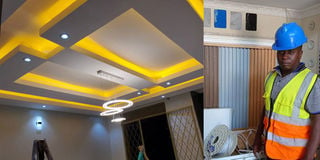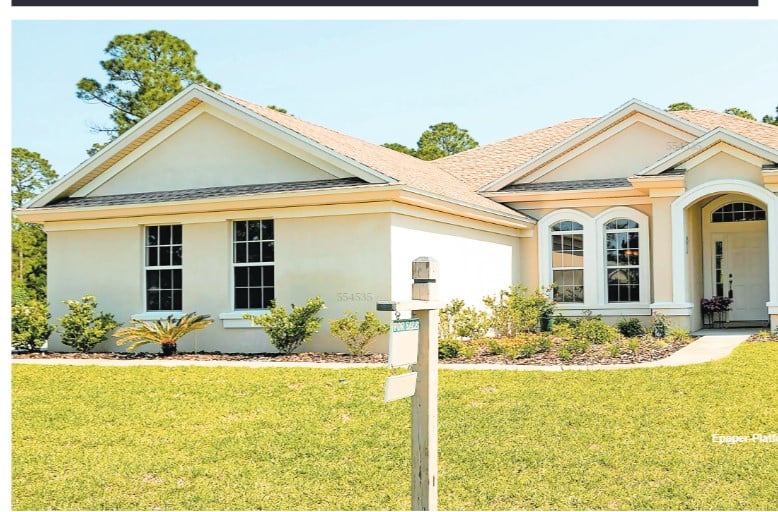
Godwin Namanya, an interior designer with a passion for working with gypsum boars. PHOTO/ESTHER BRIDGET NAKALYA.
Godwin Namanya, is an interior designer who has made a name from doing incredible gypsum designs. The passionate designer has worked on projects of varying sizes nationwide.
Namanya started as a gypsum board dealer but picked an interest in working with the material. Bitten by the design bug, Namanya who had studied electrical engineering at Kireka Technical Institute enrolled for a diploma in interior designing at Kyambogo University.
Namanya says in a sea of all other designers, he has managed to stand out because of his unequalled creativity and ability to deliver more than the client expects.
“I always try to do something different by creating new designs and innovations. I ensure to use quality materials that are exquisite, durable and affordable,” Namanya says.
One of his favourite designs combines lighting, good plastic marble, and wall panels that are different from others in the market.
“Unlike other designs on the market, we use modern LED lights which are warm and gold, and also use high gross boards, laminated with good edging and finishing,” Namanya says.
“My engineering training comes in handy when choosing things such as lighting because I know what will look great together and what will not,” he adds. To create these concepts, Namanya works with a team that does research locally and internationally. “
We have invested in benchmarking, so we travel abroad to see what they are doing and how they are doing it,” he says. Their results can be seen in places such as Lubowa Estates, Munyonyo Speke Resort and Naguru Heights. They have also worked on projects such as the NSSF Housing Project and some individual clients in Arua, Gulu, Jinja and Fort Portal.
Challenges
Although people appreciate the quality of their work, Namanya says very few want to pay the right amount. “What they do not understand is that most of our materials are imported, we pay hefty import taxes that eat into what would have been our profit,” he says.
The industry is also awash with fake products on the market and it becomes a challenge to convince a client to use the superior but more expensive materials when they have discovered the cheap duplicates.
This has forced some stakeholders to use cheap duplicates that eventually fail to perform the same function as the real thing, thereby tainting the industry’s reputation.
Experts in the field should research and travel widely to improve their skills and expertise. Also, there is a need for a professional body for interior designers to support and regulate the industry activities.
“Our profession is a low-hanging fruit that many young people should be embracing. However, they should endeavor to get the proper training, passion alone can take you only so far,” Namanya says.
Namanya stresses that interior design is a lot more than people assume. To succeed in the industry, one must understand the principles of design, layout, how to design and decorate, how to run a business, what services to offer, what to charge for each service and the health, welfare and safety of the client, among so many other elements.
“The purpose of interior design is to carefully curate a well-designed space. This takes time and it is more than simply going to a few stores and finding some things that would work. Every element used in the design must have a purpose and serve more than one function,” he urges.
Plans
The seasoned professional says his plans include locally manufacturing the materials he imports currently.
“Just as we make iron sheets and iron bars for ourselves, we can make gypsum boards and plastic panels here. This will reduce the costs of installation in interior spaces, hence better charges to customers,” says Namanya.






